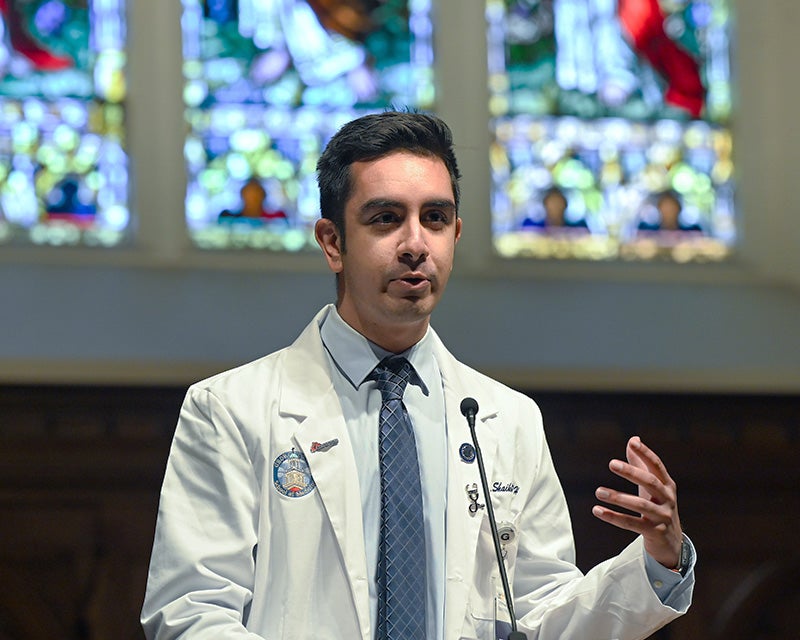Nursing, Medical Students Honor the Gift of Anatomical Donors

Posted in News Stories | Tagged anatomical donor, Anatomical Donor Mass, medical education
(March 20, 2024) — Students from Georgetown’s School of Medicine and School of Nursing came together to honor and pay respect to those who donated their bodies to benefit their education, and to express gratitude to their families, at the annual interfaith Anatomical Donor Memorial Celebration at Dahlgren Chapel on the university’s campus.
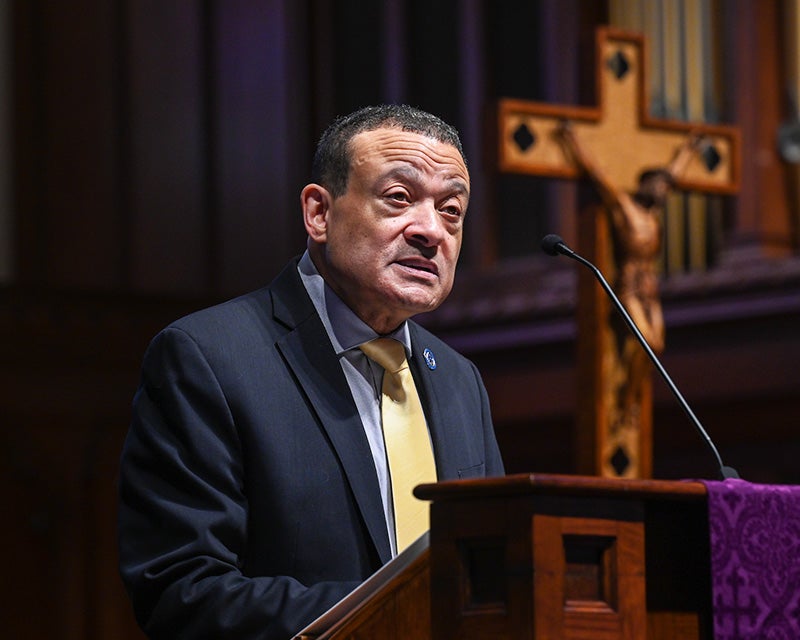
The students work with and learn from cadavers as part of their early training at the medical school and as part of the Doctor of Nurse Anesthesia Practice (DNAP) Program at the nursing school. Dozens of the students who worked with cadavers over the last year or so attended the standing-room-only ceremony on March 18.
Lee Jones, MD, dean for medical education, welcomed the families by sharing the importance of the students’ “first patient” and acknowledged the sacrifice made by their loved ones.
“You respected the wishes of your loved one, perhaps sacrificing closure and the funeral traditions of your family, for them to give Georgetown this phenomenal gift,” he said. “In the midst of such sadness and loss, you recognized their amazing gift and you loved them and honored that. Thank you.”
Prayers from the Hindu, Jewish, Islamic and Christian faiths were offered by students reflecting Georgetown’s dedication to inclusivity.
Personal Reflection
Umayr R. Shaikh, MPH (M’26), helped plan the celebration and shared a moving reflection on his time with his donor, including the fear of his first day in the cadaver lab in 2023.
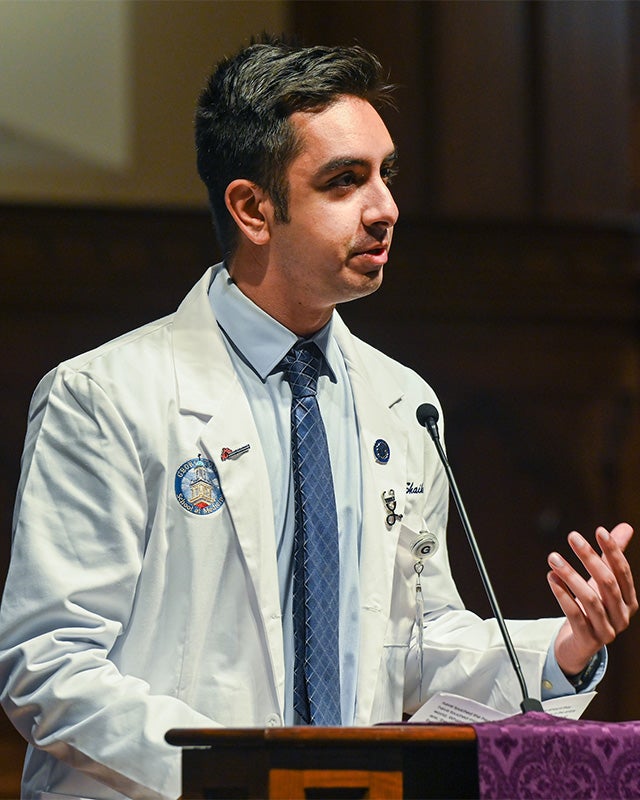
“When we unzipped the bags that housed [the cadaver], the first thing I instinctively said was, ‘Hi, nice to meet you,’ as if in that instant, my patient-centered communication training kicked in,” Shaikh said. “Because at that moment, all I saw in front of me was just that person, and immediately that fear dissipated… as if this person was reaching out their hand to comfort and welcome me.”
Shaikh also shared that he and his lab mates brought a card to accompany the female cadaver on the final journey to the cremation site. With gentle humor, he shared that the team decided she was a “tulip gal” and began a lengthy scavenger hunt on the Georgetown campus to pick tulips to also send.
“The relationships we built with our cadavers as people, as fellow human beings with a soul and a story, blossomed just like the flowers we left with her on our last day,” Shaikh said.
Shaikh noted that the ceremony is often timed just before the third-year medical students begin their clinical rotations.
“In less than a week, we transition from our classroom sciences to clinical rotations, meaning that the hands which we previously grasped in order to examine all of its nerves, muscles and blood supply will soon be grasping onto ours in real time, asking if everything’s going to be okay.
“It is the foundation of what it means to be a healer, but beyond that, what it means to be a human being — all of it contained within this puzzling yet profoundly formative time.”
Distinguished Education
The students say the Georgetown experience when working with cadavers distinguishes their education from others.
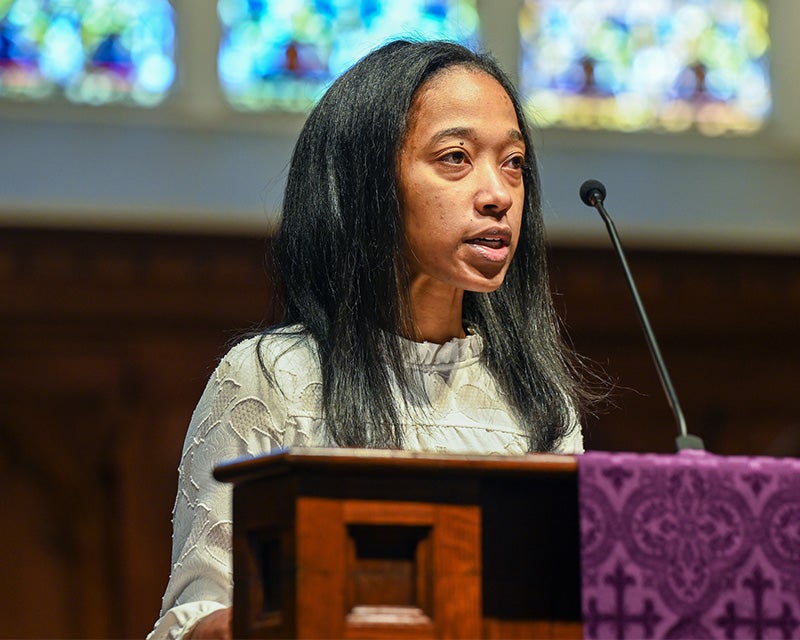
DNAP student Tiara Taylor (G’26) said having the opportunity to learn with cadavers sets Georgetown apart and offers a significant benefit to her education.
“Because of them, we are able to see an authentic representation of what we learn from textbooks before we go out into the clinical setting and practice, so they are making a big difference in our education as well as the lives of the patients we will encounter,” Taylor said.
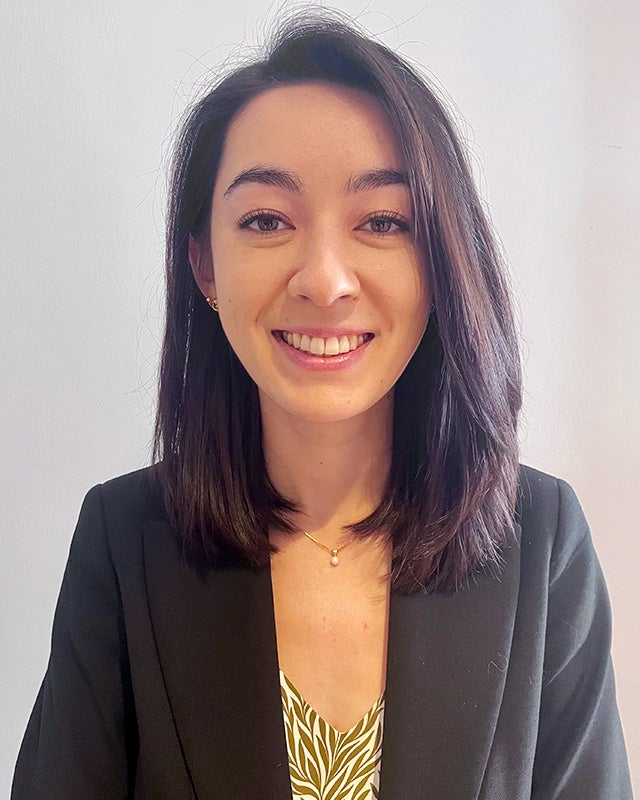
“It is important to acknowledge the family’s loss, and show our gratitude for allowing us this interaction with the body of their loved one,” she added. “I am extremely grateful for the privilege of this incredible gift.”
DNAP student Anna Jent (G’26) says honoring the donors at the Mass “feels like a natural extension of holistic care.”
“It is an incredible gift to learn from our donors in the anatomy lab,” she said. “In learning from and caring for our donors, you really experience the coalescence of science and humanity. This centers us and reminds us why we went into health care to begin with — to help people.”
The Celebration of the Mass and Anatomical Donor Memorial Celebration was organized by a committee led by John DiBello (M’26) and Umayr Shaikh (M’26). Fr. James Shea, SJ, presided.

